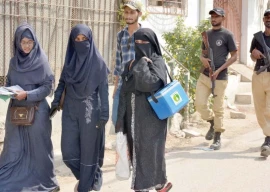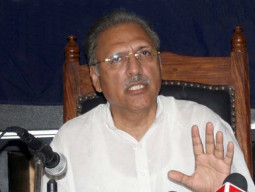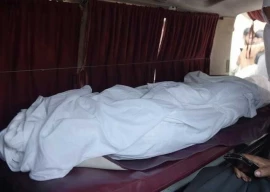
Most of the residents of Mastehki village in Kasur district are adamant to stay back and fight the flood in River Sutlej despite concerns about healthcare facilities and a shortage of daily-use items.
The river enters Pakistan through Mastehki village. A boat ride through Sutlej is the only way to access the village from Kasur district.
Asif Ali Dogar, Sharafat Ali Dogar and Khizer Hayat Doger are among the majority that is unwilling to move out of the village. They say they own land in the village and cannot leave their land unprotected. “If worst comes to worse we’ll send our women and children to relatives in Kasur. We will stay back and protect our cattle and land,” they said.
Nazim Ali, another resident staying with his land and cattle, says as long as Rescue 1122 are operating a boat service between the stranded villages and rest of the district he does not see any harm in staying back. “I make a round trip on the boat to get food and other essential items from Sehjra Pattan,” he adds.
The minority that is moving out include tenant farmers who do not own land in the affected areas and a other cautious villagers like Mastehki’s lumberdar Nazir Ahmed.
Ahmed, who is moving along with family and cattle to Kasur, says his maize fields are already inundated. “There is no way the crop can be saved now. I don’t want to take chances with my cattle now,” he adds.
Ahmed says most of the villagers are unwilling to move out. “They’re hoping water level will fall in the coming days. My estimate is that level will rise further,” he adds. Ahmed and other villagers approximate the village’s population at around 600.
Muhammad Asif, a Manawala resident, and his brother are also migrating to Kasur. They say they were working as tenant farmers. “There is no point staying back without any work to loof forward to. The fields are all flooded,” he says.
Besides difficulties in buying food and other household items, transportation of milk for sale in Kasur and lack of medical aid are the biggest concerns of villagers reluctant to abandon their cattle and land.
They say there is no public health facility is Mastehki. The nearest basic health unit is in Sehjra accessing which requires a boat ride from Mastehki to Sehjra Pattan and then onwards a walk of about 10 to 15 minutes.
Agha Zulfiqar, the medical officer at the BHU, however, says there is a medical camp in Mastehki village. He says the Punjab Rural Support Programme has set up four camps in the area: one each at Talwar Post, Sehjra Pattan post, Chanda Singhwala village and Mastehki village.
The only public health camp observed in the area is at Talwar Post.
Zulfiqar says he has treated 1,665 patients in August so far. “June, July and August are the critical months when Sutlej floods. Majority coming to the BHU in these months have skin infections,” he says.
The record of patients treated at the BHU over the last 10 years points to a rise in the three critical months. There were 1175 patients in June 2010 and 1325 in June 2011; 1665 in July 2010 and 1730 in July 2011 and 2323 in August 2010 and 1,665 so far in August 2011.
Talking to The Express Tribune at Talwar Post camp, Tehsildar Akmal Haider said the administration was on alert. He said flood in River Sutlej was no anomaly in the monsoon season. He said villagers would never migrate even if the government persuaded them to evacuate their homes. “This happens every year. The villagers have become tough and know very well how to deal with the water,” he said. He said only the nomads were migrating to safe areas. The landowners as well as the tenant farmers could never leave the village, there livelihood is tied to the fields, he added.
The Revenue Department has set up an emergency camp at Talwar Post.
Geography
Mastehki, Lakhmirwala, Buddha Singhwala and Gati Kalanjar villages’ together form a landmass bounded on one side by Pakistan-India border and on the other side by River Sutlej. On the other side of the Sutlej lie at least a dozen more villages. Sehjra is the most populous with 10,000 people residing in it.
Adv Muhammad Rafi, a Sehjra resident, compares the geography of the region to the shape of a water pitcher – the only link between the villages on both sides of River Sutlej and Kasur district, as well as Pakistan, is a bridge at Talwar Post.
Other villages in the area are Dhoopsari (pop 4,000), Nagar Ahmedpura (1,500 -2,000), Shaant (500-600), Maboki (1,000), Basti Ibrahim (500), Chanda Singhwala (1,500), Mahiwala (1,000), Fatiwala (500), Bangladesh (200), Kamalpura (2,000), Pikhiwind and Arifwali.
Published in The Express Tribune, August 25th, 2011.
COMMENTS (2)
Comments are moderated and generally will be posted if they are on-topic and not abusive.
For more information, please see our Comments FAQ

1722586547-0/Untitled-design-(73)1722586547-0-165x106.webp)


1732326457-0/prime-(1)1732326457-0-165x106.webp)












Very well written. concise and incise
This is a very insightful piece of reporting.